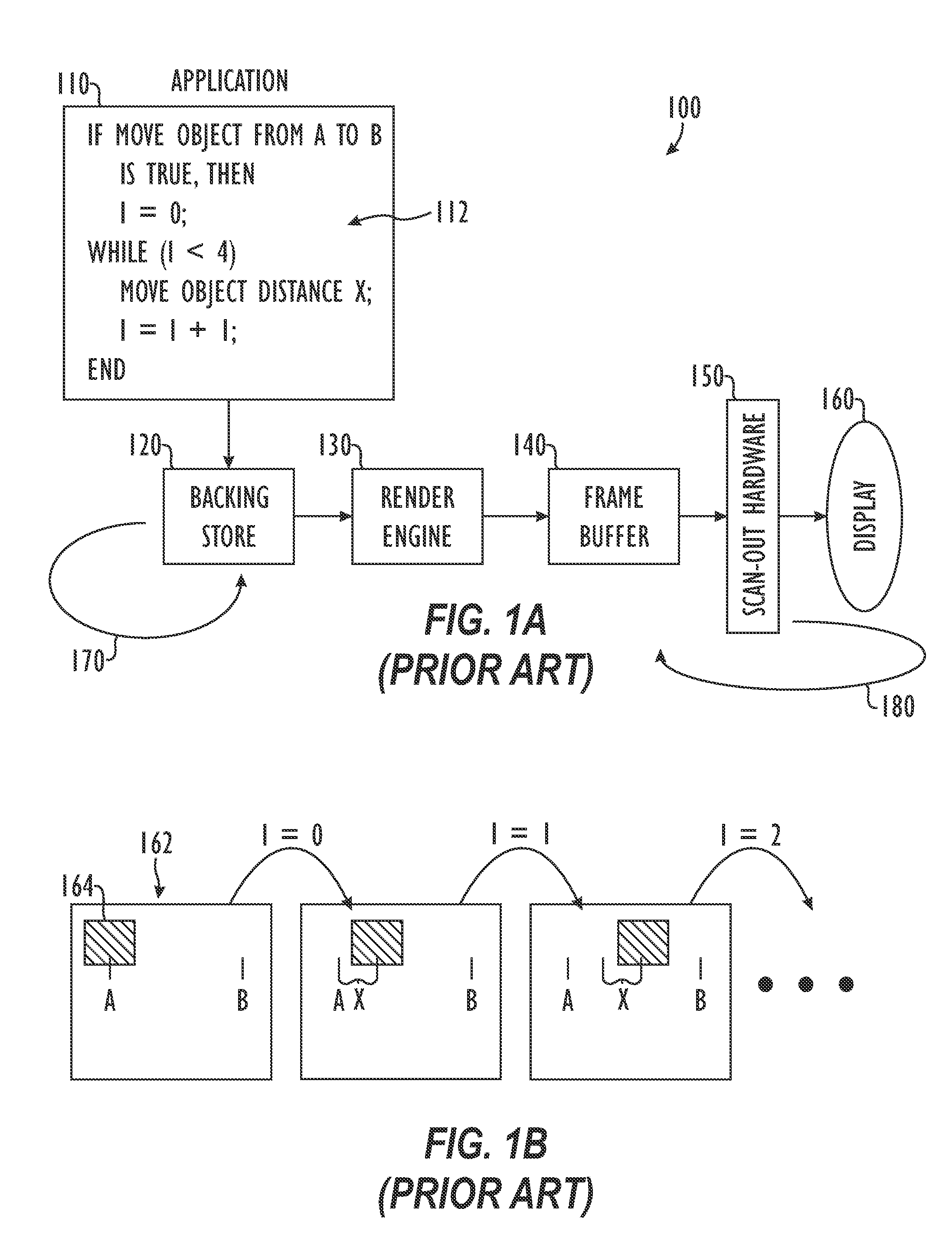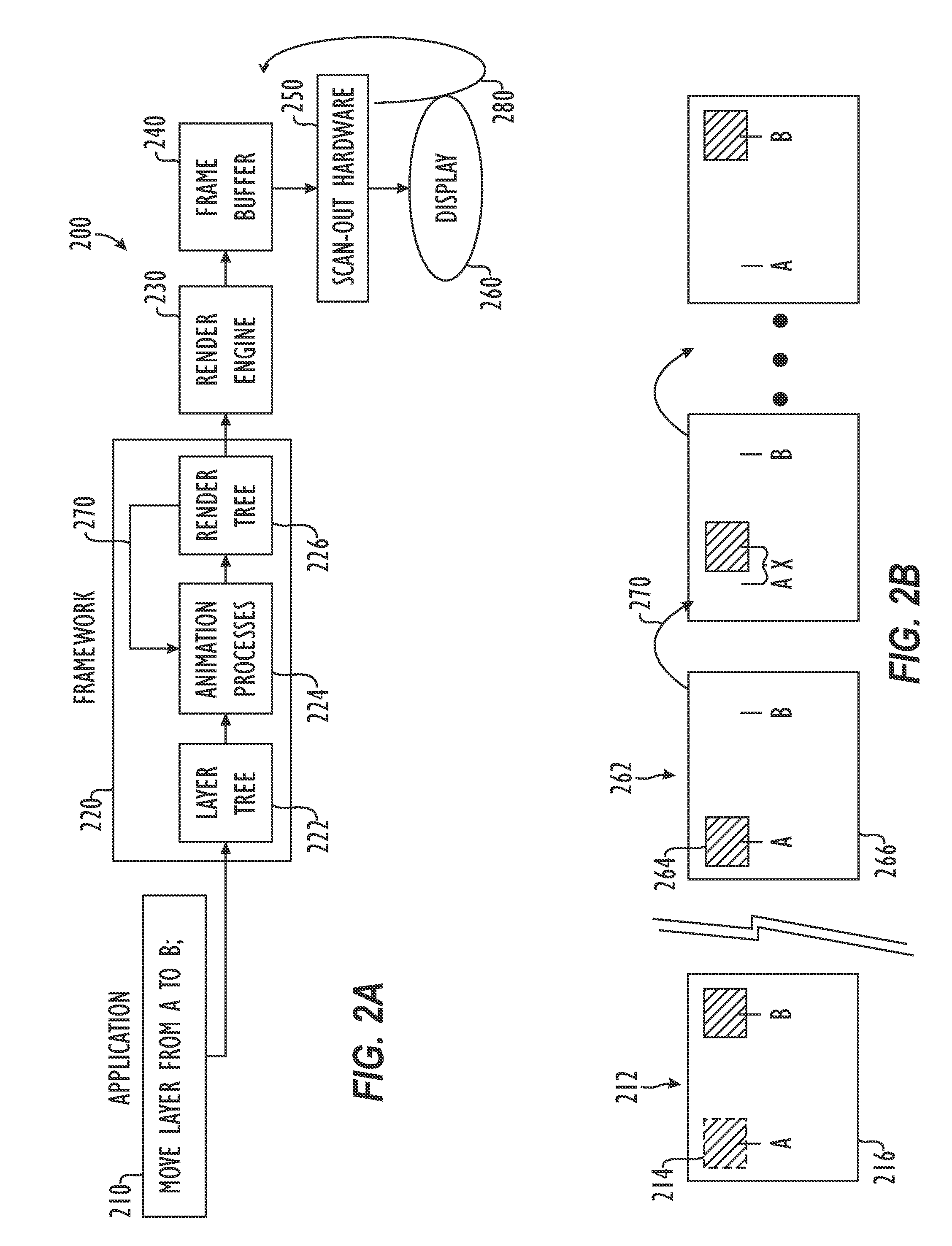Framework for Graphics Animation and Compositing Operations
a graphics animation and compositing operation technology, applied in the field of graphics animation and compositing operations, can solve the problems of not being able to distinguish between changes in content and layout, the nsview data structure and painting model is not well tuned for continuous re-layout, and the complexity of the GUI for computer applications has increased. to achieve the effect of improving resource utilization
- Summary
- Abstract
- Description
- Claims
- Application Information
AI Technical Summary
Benefits of technology
Problems solved by technology
Method used
Image
Examples
Embodiment Construction
I. Overview of Layer Kit Framework
[0031]Referring to FIG. 2A, one embodiment of a rendering process 200 according to certain teachings of the present disclosure is schematically illustrated. In the rendering process 200, an application 210 inputs graphical user interface (GUI) information into a backing store (not shown), and a layer kit framework 220 is used to process the GUI information in the backing store. Once the framework 220 has processed the GUI information, a render engine 230 renders the processed information into a frame buffer 240. Although not shown in FIG. 2A, the render engine 230 typically renders processed information into an assembly buffer that is then composited into the appropriate location of the frame buffer 240. When compositing is completed, scan-out hardware 250 outputs the rendered information in the frame buffer 240 to a display 260 using a frame rate 280 of the display 260.
[0032]The processing performed by the layer kit framework 220 includes graphics ...
PUM
 Login to View More
Login to View More Abstract
Description
Claims
Application Information
 Login to View More
Login to View More - R&D
- Intellectual Property
- Life Sciences
- Materials
- Tech Scout
- Unparalleled Data Quality
- Higher Quality Content
- 60% Fewer Hallucinations
Browse by: Latest US Patents, China's latest patents, Technical Efficacy Thesaurus, Application Domain, Technology Topic, Popular Technical Reports.
© 2025 PatSnap. All rights reserved.Legal|Privacy policy|Modern Slavery Act Transparency Statement|Sitemap|About US| Contact US: help@patsnap.com



